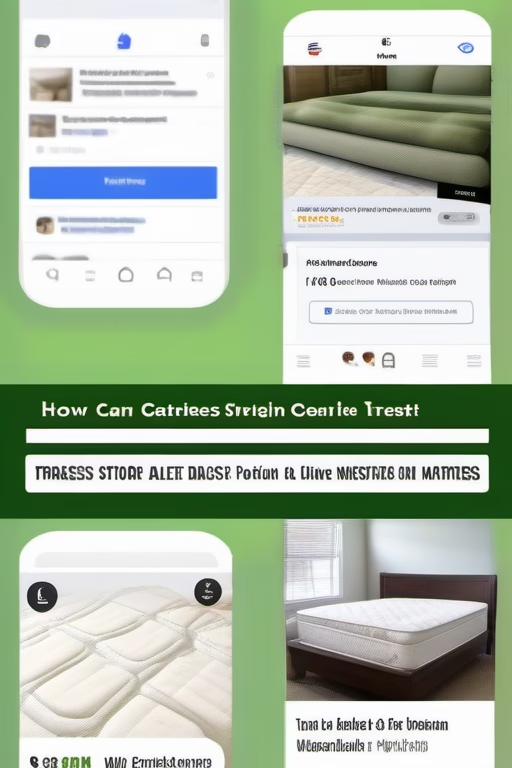SEO Strategies for Small Junk Removal Businesses
In the competitive landscape of junk removal services, establishing a strong online presence is crucial for attracting local clients and growing your business. Search Engine Optimization (SEO) plays a pivotal role in enhancing your visibility on search engines like Google, making it easier for potential customers to find and choose your services. This comprehensive guide outlines effective SEO strategies tailored specifically for small junk removal businesses, providing actionable insights to boost your search rankings, drive organic traffic, and convert visitors into loyal clients.
Table of Contents
- Introduction
- Understanding SEO
- Keyword Research
- On-Page SEO
- Optimizing Title Tags
- Meta Descriptions
- Header Tags
- Content Optimization
- Image Optimization
- Internal Linking
- Technical SEO
- Local SEO
- Off-Page SEO
- Content Marketing
- Measuring and Analyzing
- Common Mistakes to Avoid
- Keyword Stuffing
- Ignoring Mobile Users
- Poor-Quality Content
- Neglecting Local SEO
- Not Updating SEO Strategies
- Future of SEO
- Conclusion
- Frequently Asked Questions (FAQ)
- 25 Relevant Keywords
2. Understanding SEO
SEO, or Search Engine Optimization, is the practice of enhancing your website to improve its visibility when people search for products or services related to your business on search engines like Google. For small junk removal businesses, effective SEO can lead to increased online presence, more website traffic, and ultimately, more clients.
2.1 What is SEO?
SEO involves a combination of on-page, off-page, and technical strategies designed to improve your website’s ranking in search engine results pages (SERPs). By optimizing various elements of your website and online presence, you can attract more organic (non-paid) traffic and convert visitors into customers.
2.2 Importance of SEO for Small Businesses
For small businesses, SEO offers a cost-effective way to compete with larger companies by targeting local audiences and specific niches. Here are some key reasons why SEO is crucial:
- Cost-Effective Marketing: Unlike paid advertising, SEO targets users actively searching for your services, providing a higher return on investment (ROI).
- Increased Visibility: Higher rankings in SERPs make it easier for potential clients to find your business online.
- Credibility and Trust: Appearing at the top of search results enhances your business’s credibility and trustworthiness.
- Local Targeting: SEO strategies like local SEO help you reach customers in your immediate geographic area, which is essential for service-based businesses.
- Long-Term Results: While SEO requires ongoing effort, the results are sustainable and can provide long-term benefits compared to short-term advertising campaigns.
3. Keyword Research
Keyword research is the foundation of any successful SEO strategy. It involves identifying the terms and phrases that potential customers use when searching for junk removal services. By targeting the right keywords, you can attract more relevant traffic to your website.
3.1 Identifying Relevant Keywords
Start by brainstorming a list of keywords related to your junk removal services. Consider the specific services you offer, your service area, and the needs of your potential clients.
- Primary Keywords: Core terms like "junk removal," "trash removal," "garbage collection."
- Service-Specific Keywords: Terms like "residential junk removal," "commercial junk removal," "construction debris removal."
- Location-Based Keywords: Incorporate your city or region, such as "junk removal in [City Name]," "trash removal [Neighborhood Name]."
- Problem-Solving Keywords: Phrases like "how to get rid of old furniture," "best junk removal service," "affordable junk removal."
3.2 Using Keyword Tools
Leverage keyword research tools to discover additional keywords, assess their search volume, and evaluate competition. Some popular tools include:
- Google Keyword Planner: A free tool that provides insights into keyword search volume and competition.
- Ahrefs: Offers comprehensive keyword analysis, including difficulty scores and related keyword suggestions.
- SEMrush: Provides keyword research, competitive analysis, and tracking of keyword rankings.
- Moz Keyword Explorer: Helps identify keyword opportunities and assess their potential impact.
3.3 Long-Tail Keywords
Long-tail keywords are longer, more specific phrases that target niche segments of your audience. While they typically have lower search volumes, they often have higher conversion rates due to their specificity.
- Example Long-Tail Keywords: "affordable residential junk removal in [City Name]," "same-day construction debris removal."
- Benefits: Less competition, higher intent, and better alignment with specific customer needs.
- Implementation: Incorporate long-tail keywords naturally into your website content, blog posts, and service descriptions.
4. On-Page SEO
On-Page SEO involves optimizing individual pages on your website to improve their search engine rankings and attract relevant traffic. Effective on-page SEO ensures that your website is both user-friendly and search engine-friendly.
4.1 Optimizing Title Tags
Title tags are one of the most important on-page SEO elements. They appear in search engine results as the clickable headline for a given result and should accurately describe the content of the page.
- Include Primary Keywords: Incorporate your main keywords naturally within the title tag.
- Keep It Concise: Aim for 50-60 characters to ensure the entire title is visible in SERPs.
- Unique Titles: Ensure each page on your website has a unique title tag to avoid duplication issues.
- Branding: Consider adding your business name at the end of the title tag for brand recognition.
- Example: "Residential Junk Removal Services in [City Name] | Market Wiz AI"
4.2 Meta Descriptions
Meta descriptions provide a brief summary of a webpage's content and appear below the title tag in search engine results. While they don't directly impact rankings, well-crafted meta descriptions can improve click-through rates.
- Include Relevant Keywords: Incorporate primary and secondary keywords naturally.
- Be Compelling: Write persuasive descriptions that encourage users to click on your link.
- Keep It Within Limits: Aim for 150-160 characters to ensure the entire description is visible.
- Call to Action: Use actionable language such as "Call now," "Get a free quote," or "Learn more."
- Example: "Looking for reliable junk removal in [City Name]? Contact Market Wiz AI for fast, affordable, and eco-friendly services today!"
4.3 Header Tags
Header tags (H1, H2, H3, etc.) structure your content and make it easier for both users and search engines to understand the hierarchy and key points of your content.
- H1 Tag: Each page should have a single H1 tag that represents the main topic of the page.
- Subheadings: Use H2 and H3 tags to organize content into sections and subsections, incorporating relevant keywords where appropriate.
- Readability: Ensure headers are descriptive and enhance the readability of your content.
- Example:
- H1: "SEO Strategies for Small Junk Removal Businesses"
- H2: "Keyword Research"
- H3: "Identifying Relevant Keywords"
4.4 Content Optimization
High-quality, optimized content is crucial for effective SEO. It not only attracts search engine bots but also engages and converts your target audience.
- Quality Content: Create informative, valuable, and original content that addresses the needs and questions of your potential clients.
- Keyword Placement: Incorporate primary and secondary keywords naturally within the content, avoiding keyword stuffing.
- Content Length: Aim for comprehensive content that thoroughly covers the topic. Longer content tends to perform better in search rankings.
- Readability: Use clear and concise language, short paragraphs, bullet points, and subheadings to enhance readability.
- Internal Linking: Link to other relevant pages on your website to improve navigation and distribute link equity.
- Example: Detailed service pages explaining each junk removal service, blog posts with decluttering tips, and guides on recycling practices.
4.5 Image Optimization
Optimizing images on your website can improve load times, enhance user experience, and contribute to better SEO performance.
- File Size: Compress images to reduce file size without compromising quality, ensuring faster page load times.
- Alt Text: Use descriptive alt text that includes relevant keywords to help search engines understand the content of the images.
- File Names: Rename image files with descriptive names instead of generic ones like "image1.jpg."
- Responsive Images: Ensure images are optimized for different devices and screen sizes.
- Example: An image showcasing a before-and-after junk removal scenario with alt text like "Before and After Residential Junk Removal in [City Name]."
4.6 Internal Linking
Internal linking involves connecting different pages within your website through hyperlinks. This practice helps search engines crawl your site more effectively and distributes link equity across your pages.
- Relevant Links: Link to related content that adds value to the reader, such as linking a blog post about decluttering tips to your service pages.
- Anchor Text: Use descriptive anchor text that clearly indicates the content of the linked page.
- Hierarchy: Establish a clear hierarchy by linking from higher-level pages (e.g., homepage) to more specific pages (e.g., individual service pages).
- Example: In a blog post about "Spring Cleaning Tips," include links to your "Residential Junk Removal" and "Eco-Friendly Disposal" service pages.
5. Technical SEO
Technical SEO focuses on optimizing the technical aspects of your website to ensure that search engines can crawl, index, and render your site efficiently. Addressing technical SEO issues can significantly improve your website's performance and search rankings.
5.1 Site Speed
Site speed is a critical ranking factor and directly impacts user experience. A slow-loading website can lead to higher bounce rates and lower engagement.
- Optimize Images: Compress images and use appropriate formats to reduce load times.
- Minify CSS and JavaScript: Remove unnecessary characters from code to improve loading speed.
- Use a Content Delivery Network (CDN): Distribute your website's content across multiple servers to enhance load times for users in different locations.
- Enable Browser Caching: Store frequently accessed resources in users' browsers to speed up subsequent visits.
- Example: Implement tools like Google PageSpeed Insights to identify and fix speed-related issues.
5.2 Mobile Friendliness
With the majority of searches now conducted on mobile devices, ensuring that your website is mobile-friendly is essential for both SEO and user experience.
- Responsive Design: Use a responsive design that adapts to different screen sizes and devices.
- Readable Text: Ensure that text is legible without requiring users to zoom in.
- Easy Navigation: Simplify navigation menus and buttons for touch interactions.
- Fast Loading on Mobile: Optimize mobile site speed to provide a seamless experience.
- Example: Test your website's mobile-friendliness using Google's Mobile-Friendly Test tool.
5.3 Secure Website (HTTPS)
Security is a top priority for both users and search engines. Switching your website from HTTP to HTTPS ensures that data transmitted between your site and users is encrypted and secure.
- SSL Certificate: Obtain and install an SSL certificate to enable HTTPS on your website.
- Trust Indicators: Display security badges and indicators to reassure users of your site's safety.
- SEO Benefits: Google considers HTTPS a ranking signal, so securing your site can improve your search rankings.
- Example: Implement an SSL certificate through your hosting provider and update all internal links to use HTTPS.
5.4 XML Sitemaps
An XML sitemap helps search engines understand the structure of your website and discover all of your content efficiently.
- Create an XML Sitemap: Generate an XML sitemap that includes all important pages of your website.
- Submit to Search Engines: Submit your sitemap to Google Search Console and Bing Webmaster Tools to facilitate indexing.
- Keep It Updated: Regularly update your sitemap to reflect any changes or additions to your website's content.
- Example: Use tools like Yoast SEO for WordPress to automatically generate and update your XML sitemap.
5.5 Robots.txt
The robots.txt file instructs search engine crawlers on which pages or sections of your website should not be crawled or indexed. Proper configuration helps prevent the indexing of duplicate or sensitive content.
- Create a Robots.txt File: Develop a robots.txt file that guides search engines on your website's crawling preferences.
- Disallow Sensitive Pages: Prevent crawlers from accessing pages like admin dashboards or duplicate content.
- Allow Essential Pages: Ensure that important pages, such as service pages and contact information, are accessible to search engines.
- Example:
# robots.txt User-agent: * Disallow: /admin/ Disallow: /login/ Allow: / - Test Your Robots.txt: Use Google Search Console’s Robots.txt Tester to verify the correctness of your file.
5.6 Structured Data
Structured data uses specific vocabulary (like Schema.org) to provide search engines with detailed information about your website's content. Implementing structured data can enhance your search listings with rich snippets, improving click-through rates.
- Implement Schema Markup: Add relevant schema types such as Local Business, Service, and Review to your website.
- Use JSON-LD Format: Prefer JSON-LD for adding structured data as it's easier to implement and maintain.
- Validate Your Markup: Use Google’s Structured Data Testing Tool to ensure your markup is correctly implemented.
- Example: Add Local Business schema to your contact page to provide search engines with detailed information about your junk removal services.
6. Local SEO
Local SEO focuses on optimizing your online presence to attract more business from relevant local searches. For small junk removal businesses, local SEO is essential to connect with customers in your service area.
6.1 Google My Business
Google My Business (GMB) is a free tool that allows you to manage your online presence across Google, including Search and Maps. Optimizing your GMB listing is a cornerstone of local SEO.
- Claim and Verify Your Listing: Ensure that your business is claimed and verified to gain full control over your listing information.
- Complete All Information: Fill out every section, including business name, address, phone number, website, hours of operation, and services offered.
- Add High-Quality Photos: Upload professional images of your team, equipment, and completed junk removal projects to build trust and attract clients.
- Regular Updates: Post updates about promotions, new services, or company news to keep your listing active and engaging.
- Manage Reviews: Encourage satisfied customers to leave positive reviews and respond promptly to any feedback.
- Example: A well-optimized GMB listing for "Clean Sweep Junk Removal in [City Name]" with detailed service descriptions and customer reviews.
6.2 Local Citations
Local citations are online mentions of your business's name, address, and phone number (NAP). They play a significant role in local SEO by helping search engines verify your business's legitimacy and relevance.
- Consistent NAP: Ensure that your business name, address, and phone number are consistent across all online platforms.
- List on Local Directories: Submit your business to reputable local directories such as Yelp, Yellow Pages, and local chamber of commerce websites.
- Optimize Profiles: Complete all profile information, add high-quality images, and provide detailed descriptions of your services.
- Monitor Citations: Regularly check and update your citations to maintain accuracy and consistency.
- Example: Listings on local business directories like "Best Junk Removal Services in [City Name]" with consistent NAP information.
6.3 Customer Reviews
Customer reviews are a powerful component of local SEO. They not only influence potential customers but also impact your search engine rankings.
- Encourage Reviews: Ask satisfied customers to leave positive reviews on platforms like Google, Yelp, and Facebook.
- Respond to Reviews: Engage with reviewers by thanking them for positive feedback and addressing any concerns in negative reviews.
- Showcase Testimonials: Feature positive reviews and testimonials on your website and marketing materials to build credibility.
- Monitor Your Reputation: Regularly check review platforms to stay informed about customer satisfaction and identify areas for improvement.
- Example: A collection of positive reviews on your GMB listing highlighting prompt service, professionalism, and affordability.
6.4 Local Content
Creating content that is relevant to your local audience can significantly enhance your local SEO efforts. Local content helps establish your authority in the community and attracts more targeted traffic.
- Local Blog Posts: Write blog articles about local events, community clean-up drives, or tips for maintaining a clutter-free home in your area.
- Service Area Pages: Create dedicated pages for each area you serve, providing specific information and keywords related to those locations.
- Local Partnerships: Collaborate with other local businesses or organizations and create content that highlights these partnerships.
- Case Studies: Share success stories of local clients who benefited from your junk removal services.
- Example: A blog post titled "Top 5 Decluttering Tips for Homeowners in [City Name]" featuring your junk removal services.
7. Off-Page SEO
Off-Page SEO refers to actions taken outside of your website to impact your rankings within search engine results. Building a strong off-page SEO foundation enhances your site's authority and credibility.
7.1 Link Building
Link building involves acquiring backlinks from other reputable websites to your own. High-quality backlinks signal to search engines that your site is trustworthy and valuable.
- Guest Blogging: Write guest posts for local blogs, community websites, or industry-related publications to earn backlinks.
- Local Partnerships: Partner with local businesses and organizations to exchange links or collaborate on content.
- Directory Listings: Ensure your business is listed in reputable online directories with a link back to your website.
- Content Marketing: Create shareable content such as infographics, guides, and videos that naturally attract backlinks.
- Example: A guest post on a local home improvement blog with a backlink to your "Residential Junk Removal" service page.
7.3 Guest Blogging
Guest blogging involves writing articles for other websites in your industry or local community. This strategy helps you build backlinks, increase brand exposure, and establish yourself as an authority in junk removal.
- Identify Relevant Blogs: Look for blogs and websites that cater to your target audience and accept guest contributions.
- Pitch Quality Content: Propose well-researched, informative articles that provide value to the host site's readers.
- Include Backlinks: Naturally incorporate links back to your website or specific service pages within your guest posts.
- Example: Writing a guest post titled "Top Tips for a Successful Home Renovation Cleanout" for a local home improvement blog.
7.4 Community Engagement
Active participation in your local community can enhance your off-page SEO by building relationships, earning mentions, and generating natural backlinks.
- Sponsor Local Events: Sponsor or participate in local events, charity drives, or community projects to increase your brand's visibility and earn backlinks from event websites.
- Join Local Organizations: Become a member of local chambers of commerce, business associations, or other community groups.
- Engage in Local Forums: Participate in local online forums or social media groups to share your expertise and promote your services.
- Example: Sponsoring a local charity clean-up event and getting a mention on the event's official website with a link back to your site.
8. Content Marketing
Content marketing involves creating and distributing valuable, relevant, and consistent content to attract and retain a clearly defined audience. For small junk removal businesses, content marketing can drive organic traffic, establish authority, and convert visitors into customers.
8.1 Creating Value Content
Value content addresses the needs and questions of your target audience, positioning your business as a trusted resource.
- Educational Articles: Write blog posts that educate your audience about junk removal processes, benefits, and best practices.
- How-To Guides: Create step-by-step guides on topics like "How to Prepare for a Junk Removal Service" or "Effective Decluttering Tips."
- FAQs: Develop comprehensive FAQ sections that answer common questions about your services.
- Example: A blog post titled "5 Reasons Why Professional Junk Removal is Worth the Investment."
8.2 Blogging Strategies
Consistent blogging can significantly enhance your SEO efforts by providing fresh content, targeting relevant keywords, and engaging your audience.
- Regular Posting Schedule: Maintain a consistent posting schedule, such as publishing a new blog post every week or month.
- Keyword Integration: Incorporate your target keywords naturally within your blog posts to improve search rankings.
- Engaging Topics: Choose topics that are relevant to your audience's interests and needs, such as "How to Safely Dispose of Electronics" or "Benefits of Eco-Friendly Junk Removal."
- Share on Social Media: Promote your blog posts on social media platforms to drive traffic and increase engagement.
- Example: A monthly blog series on "Seasonal Decluttering Tips" tailored to different times of the year.
8.3 Video Content
Video content is highly engaging and can effectively communicate your services, showcase your expertise, and build trust with your audience.
- Service Demonstrations: Create videos that demonstrate your junk removal process, highlighting efficiency and professionalism.
- Customer Testimonials: Share video testimonials from satisfied clients to build credibility and trust.
- Educational Videos: Produce videos that offer tips on decluttering, recycling, and responsible waste disposal.
- Behind-the-Scenes: Offer a glimpse into your daily operations, showcasing your team and equipment.
- Example: A video titled "A Day in the Life of a Junk Removal Specialist at [Your Business Name]."
8.4 Infographics
Infographics are visually appealing and can simplify complex information, making it easier for your audience to understand and share.
- Data Visualization: Use infographics to present statistics related to junk removal, such as the environmental benefits of recycling.
- Step-by-Step Processes: Create infographics that outline the junk removal process, helping potential clients understand what to expect.
- Shareable Content: Design infographics that are easy to share on social media and other platforms to increase your reach.
- Example: An infographic titled "The Environmental Impact of Professional Junk Removal."
9. Measuring and Analyzing
Tracking and analyzing your SEO efforts is essential to understand what works, identify areas for improvement, and make informed decisions to optimize your strategies.
9.1 Using Google Analytics
Google Analytics is a powerful tool that provides detailed insights into your website’s performance, user behavior, and traffic sources. Implementing and utilizing Google Analytics can help you measure the effectiveness of your SEO strategies.
- Set Up Google Analytics: Create a Google Analytics account and add the tracking code to your website.
- Track Key Metrics: Monitor metrics such as organic traffic, bounce rate, session duration, and conversion rates.
- Analyze User Behavior: Understand how users navigate your site, which pages they visit, and where they drop off.
- Identify Top-Performing Pages: Determine which pages attract the most organic traffic and generate the highest conversions.
- Example: Analyzing the performance of your "Residential Junk Removal" service page to identify opportunities for improvement.
9.2 Tracking Key Metrics
Tracking the right metrics allows you to gauge the success of your SEO efforts and make data-driven decisions to enhance your strategies.
- Organic Traffic: The number of visitors coming to your website through search engine results.
- Keyword Rankings: Monitor the positions of your target keywords in search engine results pages (SERPs).
- Conversion Rate: The percentage of website visitors who take a desired action, such as booking a service or requesting a quote.
- Bounce Rate: The percentage of visitors who leave your site after viewing only one page.
- Average Session Duration: The average amount of time users spend on your website during a single session.
- Backlinks: The number and quality of external websites linking to your site.
- Example: Tracking an increase in organic traffic to your "Commercial Junk Removal" page after implementing keyword optimization.
9.3 Adjusting Strategies
SEO is not a one-time task but an ongoing process. Use the insights gained from your analytics and tracking efforts to refine and optimize your strategies continuously.
- Identify Successful Tactics: Determine which strategies are driving the most traffic and conversions, and focus more resources on them.
- Address Weaknesses: Identify areas where your SEO efforts are lacking and make necessary improvements.
- Stay Updated: Keep up with the latest SEO trends and algorithm updates to ensure your strategies remain effective.
- Experiment and Test: Try new tactics and measure their impact to discover what works best for your business.
- Example: If a particular blog post is attracting a lot of organic traffic, consider creating more content on similar topics.
10. Common Mistakes to Avoid
While implementing SEO strategies, it's essential to be aware of common pitfalls that can hinder your efforts. Avoiding these mistakes can save you time, resources, and help you achieve better results.
10.1 Keyword Stuffing
Keyword stuffing involves overloading your content with keywords in an attempt to manipulate search rankings. This practice can lead to penalties from search engines and negatively impact user experience.
- Avoid Overuse: Use keywords naturally within your content without forcing them in awkward places.
- Focus on Readability: Prioritize creating high-quality, readable content over excessive keyword usage.
- Example: Instead of repeating "junk removal services" multiple times in a paragraph, use variations and related terms.
10.2 Ignoring Mobile Users
With a significant portion of searches conducted on mobile devices, neglecting mobile optimization can severely impact your SEO and user engagement.
- Responsive Design: Ensure your website adapts seamlessly to different screen sizes and devices.
- Optimize Load Times: Mobile users expect fast-loading websites. Optimize images and use efficient coding practices.
- Example: A mobile-friendly website that allows users to easily navigate and book junk removal services on their smartphones.
10.3 Poor-Quality Content
Content is king in SEO, and poor-quality content can undermine your efforts. High-quality, relevant content attracts and retains visitors, encourages sharing, and earns backlinks.
- Originality: Avoid duplicate content. Ensure all content on your website is unique and valuable.
- Relevance: Create content that is directly related to your services and meets the needs of your audience.
- Engagement: Write engaging and informative content that encourages users to spend more time on your site.
- Example: Detailed service descriptions, informative blog posts, and helpful guides related to junk removal and decluttering.
10.4 Neglecting Local SEO
For service-based businesses like junk removal, local SEO is crucial for attracting clients in your area. Ignoring local SEO strategies can limit your visibility to potential local customers.
- Optimize Google My Business: Ensure your GMB listing is fully optimized and regularly updated.
- Local Keywords: Incorporate location-based keywords into your website content and metadata.
- Consistent NAP: Maintain consistent Name, Address, and Phone number information across all online platforms.
- Example: Targeting keywords like "junk removal in [City Name]" and "affordable junk removal services near me."
10.5 Not Updating SEO Strategies
SEO is a dynamic field that evolves with search engine algorithm updates and changing user behaviors. Failing to update your SEO strategies can result in declining search rankings and reduced traffic.
- Stay Informed: Keep up with the latest SEO trends, algorithm changes, and best practices.
- Regular Audits: Conduct regular SEO audits to identify and fix issues on your website.
- Adapt Strategies: Be prepared to adjust your strategies based on new insights and changes in the SEO landscape.
- Example: Adapting to mobile-first indexing by ensuring your website is fully optimized for mobile devices.
11. Future of SEO
SEO is continuously evolving, driven by advancements in technology and changing user behaviors. Staying ahead of these trends can give your small junk removal business a competitive edge.
11.1 Voice Search
The rise of voice-activated devices like smartphones and smart speakers has changed how people search for information. Optimizing for voice search involves focusing on natural language and conversational keywords.
- Use Conversational Keywords: Incorporate phrases that people are likely to speak, such as "Where can I get junk removed near me?"
- Optimize for Questions: Include content that answers common questions related to junk removal services.
- Local Focus: Ensure your local SEO is robust, as many voice searches are location-specific.
- Example: Creating FAQ sections that address questions like "How do I schedule a junk removal service?"
11.2 AI and Machine Learning
Artificial Intelligence (AI) and machine learning are playing increasingly significant roles in SEO. These technologies help search engines understand user intent better and deliver more relevant results.
- Content Personalization: Use AI tools to analyze user behavior and personalize content accordingly.
- Voice Assistants: Optimize your content for AI-driven voice assistants like Google Assistant and Amazon Alexa.
- Automated SEO Tools: Leverage AI-powered SEO tools to streamline keyword research, content optimization, and performance tracking.
- Example: Utilizing AI tools to generate content ideas based on trending topics and user queries in the junk removal industry.
11.3 Mobile-First Indexing
Google has shifted to mobile-first indexing, meaning it primarily uses the mobile version of a website for indexing and ranking. Ensuring your website is optimized for mobile devices is no longer optional but a necessity.
- Responsive Design: Ensure your website adapts seamlessly to different screen sizes and devices.
- Optimize Load Times: Mobile users expect fast-loading websites. Optimize images, use efficient coding practices, and leverage caching.
- Mobile-Friendly Navigation: Simplify navigation menus and buttons for touch interactions.
- Example: A mobile-optimized website that allows users to easily navigate, book services, and contact your business from their smartphones.
11.4 Semantic Search
Semantic search focuses on understanding the intent and contextual meaning behind search queries. Optimizing for semantic search involves creating content that comprehensively covers topics and answers user questions effectively.
- Comprehensive Content: Develop in-depth content that thoroughly explores relevant topics, providing value to your audience.
- Use Structured Data: Implement structured data to help search engines better understand your content’s context.
- Answer User Intent: Focus on creating content that directly answers the questions and needs of your potential customers.
- Example: A detailed guide on "Eco-Friendly Junk Removal Practices" that addresses various aspects and benefits.
12. Conclusion
Implementing effective SEO strategies is essential for small junk removal businesses looking to enhance their online presence, attract more local clients, and drive sustainable growth. By conducting thorough keyword research, optimizing on-page and technical elements, leveraging local SEO, and engaging in off-page activities, you can significantly improve your search engine rankings and visibility.
Remember that SEO is an ongoing process that requires continuous effort and adaptation to changing trends and algorithms. Regularly monitor your performance, stay informed about the latest SEO developments, and be willing to adjust your strategies to maintain and enhance your competitive edge.
Investing in SEO not only helps in attracting more clients but also builds a strong foundation for your business’s long-term success in the junk removal industry.
Frequently Asked Questions (FAQ)
1. What is SEO?
SEO, or Search Engine Optimization, is the practice of enhancing your website to improve its visibility in search engine results, thereby attracting more organic traffic.
2. Why is SEO important for small junk removal businesses?
SEO helps small junk removal businesses increase their online visibility, attract more local clients, and compete effectively with larger companies without substantial advertising budgets.
3. How do I start with keyword research?
Begin by brainstorming relevant terms related to your services and location. Use keyword research tools like Google Keyword Planner, Ahrefs, or SEMrush to find related keywords, assess their search volume, and evaluate competition.
4. What are long-tail keywords?
Long-tail keywords are longer, more specific phrases that target niche segments of your audience. They typically have lower search volumes but higher conversion rates due to their specificity.
5. How can I optimize my title tags?
Include primary keywords naturally, keep them concise (50-60 characters), ensure each page has a unique title, and consider adding your business name for branding.
6. What should I include in my meta descriptions?
Incorporate relevant keywords, provide a compelling summary of the page content, keep it within 150-160 characters, and include a clear call-to-action.
7. Why are header tags important?
Header tags structure your content, making it easier for both users and search engines to understand the hierarchy and key points of your content.
8. How do I optimize my website's content?
Create high-quality, informative content that addresses your audience's needs, incorporate relevant keywords naturally, use subheadings for structure, and ensure readability.
9. What is technical SEO?
Technical SEO involves optimizing the technical aspects of your website, such as site speed, mobile-friendliness, secure connections (HTTPS), XML sitemaps, and structured data, to improve search engine crawling and indexing.
10. How can I improve my website's load speed?
Compress images, minify CSS and JavaScript files, use a Content Delivery Network (CDN), enable browser caching, and optimize server response times.
11. What is Google My Business and why is it important?
Google My Business is a free tool that allows businesses to manage their online presence across Google Search and Maps. It's crucial for local SEO as it helps your business appear in local search results and provides essential information to potential clients.
12. How do I encourage customers to leave reviews?
Ask satisfied customers to leave reviews, provide easy links to your review profiles, follow up with emails after service completion, and offer incentives for feedback.
13. What are local citations?
Local citations are online mentions of your business's name, address, and phone number (NAP) on various directories and websites. They help improve your local SEO by validating your business's legitimacy.
14. How can I build backlinks for my website?
Guest blogging, partnering with local businesses, submitting to reputable directories, creating shareable content, and engaging in community activities are effective ways to build high-quality backlinks.
15. What is the role of content marketing in SEO?
Content marketing involves creating valuable, relevant content to attract and engage your target audience. It plays a significant role in SEO by providing fresh content, targeting relevant keywords, and earning backlinks.
16. How do I track my SEO performance?
Use tools like Google Analytics and Google Search Console to monitor key metrics such as organic traffic, keyword rankings, conversion rates, and user behavior on your website.
17. What are some common SEO mistakes to avoid?
Avoid keyword stuffing, neglecting mobile optimization, creating low-quality content, ignoring local SEO, and failing to update your SEO strategies in response to algorithm changes.
18. How important is mobile optimization for SEO?
Mobile optimization is crucial as a significant portion of searches are conducted on mobile devices. Google uses mobile-first indexing, meaning it primarily uses the mobile version of a website for ranking and indexing.
19. What is structured data and how does it help SEO?
Structured data uses specific vocabulary to provide search engines with detailed information about your website's content. It helps enhance your search listings with rich snippets, improving visibility and click-through rates.
20. How can I use blog posts to improve SEO?
Regularly publishing blog posts targeting relevant keywords, addressing your audience's questions, and providing valuable information can boost your SEO by increasing organic traffic and earning backlinks.
21. What is local SEO?
Local SEO focuses on optimizing your online presence to attract more business from relevant local searches. It involves strategies like optimizing Google My Business, building local citations, and targeting location-specific keywords.
22. Can I do SEO myself or should I hire a professional?
While basic SEO can be managed independently, hiring a professional can provide advanced strategies, save time, and ensure that your SEO efforts are effective and up-to-date with the latest best practices.
23. How long does it take to see results from SEO?
SEO is a long-term strategy, and it typically takes 3-6 months to start seeing significant results. However, the timeframe can vary based on competition, the effectiveness of your strategies, and the current state of your website.
24. What is the difference between on-page and off-page SEO?
On-page SEO involves optimizing elements within your website, such as content, meta tags, and internal links. Off-page SEO focuses on activities outside your website, like building backlinks and enhancing your online reputation.
25. How often should I update my SEO strategies?
Regularly review and update your SEO strategies at least quarterly to adapt to changes in search engine algorithms, market trends, and evolving business goals.
25 Relevant Keywords
- SEO for Junk Removal
- Small Business SEO
- Junk Removal Marketing
- Local SEO Junk Removal
- SEO Strategies
- Search Engine Optimization Junk Removal
- Junk Removal Website Optimization
- Keyword Research Junk Removal
- On-Page SEO Junk Removal
- Off-Page SEO Junk Removal
- Content Marketing Junk Removal
- Link Building Junk Removal
- Mobile SEO Junk Removal
- Technical SEO Junk Removal
- Local Listings Junk Removal
- Google My Business Junk Removal
- SEO Tools Junk Removal
- SEO Audits Junk Removal
- Organic Search Junk Removal
- Junk Removal SEO Tips
- SEO Best Practices Junk Removal
- Ranking Factors Junk Removal
- SEO Content Junk Removal
- SEO Campaigns Junk Removal
- SEO Analytics Junk Removal
- Junk Removal Online Visibility


















7.2 Social Media
While social media signals are not a direct ranking factor, an active social media presence can enhance your brand visibility, drive traffic to your website, and indirectly support your SEO efforts.